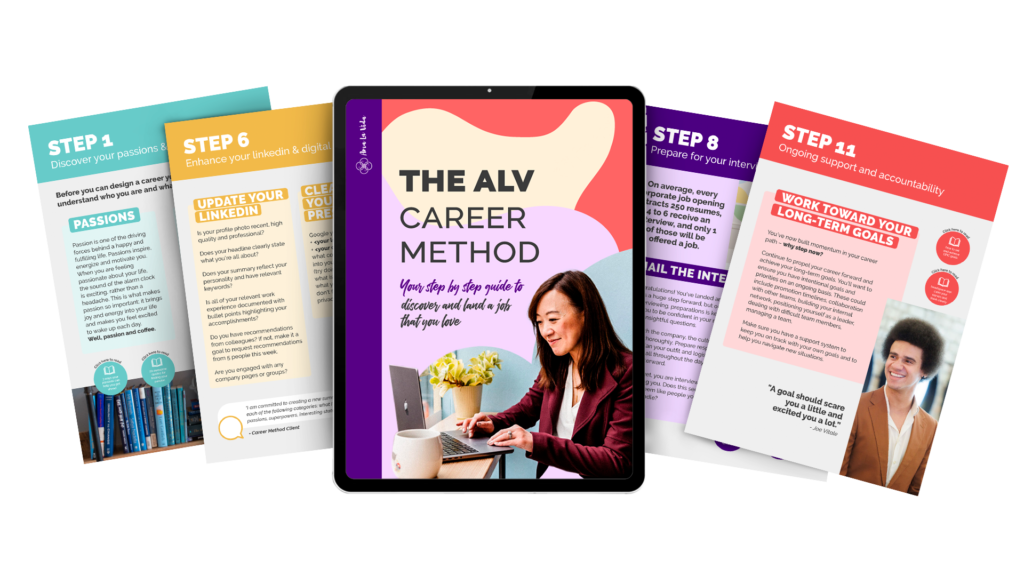Professional Development Ideas For Every Budget

As you think about your personal and professional growth, you need to think about how to invest time and funding into your career development.
There’s a misconception that professional development tools or resources require a hefty budget, and it can keep many people from taking advantage of the incredible benefits they offer.

In this post, we’ll explore how you can support your own career goals, no matter your budget.
Let’s talk about professional development funding
Before we go too far into options and costs, we would be remiss if we didn’t let you in on a secret: most companies have budget line items set aside for professional development for their employees.
While investing in your personal and professional growth can pay dividends for years to come in your career, it’s even better if you can get your company to pay for it!
What is a professional development stipend?
Essentially, a professional development stipend is funding the company has set aside to invest in developing its existing employee base.
Each organization might call it something different—learning and development stipend, professional development budget, education stipend, learning stipend, perk stipend—the list goes on, but the key trait is that this budget line item is specifically intended to help their existing employees grow their skills, learn new things, and stay ahead of trends.

Why do companies offer learning and development stipends?
They offer these education stipends for all kinds of reasons. But here are just a few:
Employee productivity
Simply put, as the current staff fill skill gaps, they’re able to be more effective in their current roles. This budget is straight investment into their company growth.
Rather than investing in additional headcount, services or technology, learning and development stipends are designed to improve employee performance.
Employee retention and recruiting capabilities
Companies recognize the immense value of investing in employee development as a strategic initiative.
Employee development is not just about honing skills; it’s about nurturing lifelong learners and fostering a culture of growth within the organization. By offering learning stipends and other education-focused employee perks, companies demonstrate their commitment to supporting the potential career growth of their workforce.
This investment pays off in multiple ways, enhancing employee retention and bolstering recruiting capabilities by attracting top talent seeking opportunities for both personal and professional development.
Employee morale
Closely related to employee retention is employee morale. A crucial aspect of creating a happy workforce lies in fostering a culture of continuous learning and development.
Employees who are provided opportunities for both professional and personal development tend to experience higher job satisfaction and are more likely to stay committed to their career goals within the organization.
Offering a professional development stipend or covering professional development expenses communicates a powerful message – that the company values its employees’ growth and is invested in continually expanding their skill sets.
How does a professional development budget work?
Most companies have a specific process for requesting a professional development budget, so you absolutely should ask your HR representative or boss.
These processes often involve submitting a proposal outlining the intended learning or development activity, along with an estimated budget.
Once approved, employees can utilize the stipend for a variety of purposes related to professional growth, such as attending workshops, enrolling in courses, purchasing learning materials, or even hiring a career coach. The organization may have guidelines specifying eligible expenses and the maximum amount that can be claimed.
After utilizing the stipend for their chosen development activities, employees often provide documentation of their expenditures and proof of participation or completion of the intended development initiative. This documentation is typically submitted to the appropriate department or individual for review and reimbursement.
By implementing a structured process for the utilization of professional development stipends, companies ensure that employees make meaningful investments in their growth while aligning with the organization’s objectives and budget allocations. This approach nurtures a learning-centric environment and encourages a proactive approach to career advancement.
Top professional development resources
Let’s get into some of our favorite ways we’ve seen employees spend available funding from their company’s education stipend or professional development. Here are a few ideas on how to spend professional development funds.
1. Career coaching
Yes, we’re a bit biased, but when it comes to enhancing your professional journey, investing in a career, leadership or executive coach can be a game-changer.
Career coaching provides personalized, one-on-one support tailored to your unique ambitions and circumstances. A skilled coach helps you identify your specific goals, align them with both your personal aspirations and your organization’s objectives.
Once you’ve set your goals, career coaches act as a guide, supporting you in creating a well-defined plan to achieve your goals. They provide insights, strategies, and feedback, ensuring your plan is practical and effective. Importantly, they help you stay accountable, pushing you to persist even when faced with setbacks.

One of the key aspects of career coaching is its ability to focus on soft skills like building communication skills. These skills are often underestimated but play a critical role in future success.
Investing in a career or leadership coach is an investment in your personal growth and, ultimately, your career success. It’s a proactive step toward realizing your potential and making a meaningful impact in your professional sphere.
If you’re seeking to elevate your career trajectory and develop essential skills, engaging with a career coach is a choice worth considering, whether you’re investing for your own personal development or tapping into a professional development budget.
Investment
Different coaching programs can range from a few hundred dollars a month to tens-of-thousands for some of the most elite executive coaches.
Ama La Vida is committed to democratizing coaching and making it available to a broader community. We couple one-on-one coaching with our unique eCoaching technology to provide reliable results and personalized support to employees beyond just the C-suite.
There are so many factors to consider as you choose a coach. Here’s a helpful roundup if you’re thinking of hiring a coach, or you can book a free consultation right here.
2. Online courses
Using your learning stipend for online courses opens a world of possibilities. From training programs for mastering technical skills like data science and software engineering to brushing up on public speaking skills, online learning platforms offer an array of options.
What’s great? You can go at your own pace, diving into interactive courses or even a full degree program. Platforms like LinkedIn Learning and online universities make learning accessible and flexible.

The best part? It’s cost-effective and fits into your schedule, maximizing your educational stipends for acquiring new skills and knowledge.
Embrace online learning platforms to enhance your abilities and boost your career journey.
Investment
Individual courses range from completely free, to less than $100, and upwards to full tuition costs.
3. Attending conferences
Industry-specific conferences can be game-changers for your personal and professional development. These events offer a mix of seminars on industry trends and thought leadership, as well as in-person gatherings tailored to your industry.
In-person conferences provide a unique chance to network, gain insights, and catch up on the latest trends. They’re like a knowledge-packed party where you can expand your horizons and make meaningful connections.

Consider allocating a part of your professional development stipends to attend conferences related to your field. It’s an investment in your expertise and network, potentially giving your career a major boost. Seize the chance to broaden your knowledge and connect with like-minded professionals.
Investment
On average, costs for industry conferences can range from a few hundred to a few thousand dollars. Smaller, more specialized conferences might be on the lower end, while larger, high-profile events can be more expensive.
It’s advisable to check the conference website for specific details regarding registration fees and any available discounts or packages. Additionally, some organizations provide scholarships or reduced rates for students, early-career professionals, or non-profit employees, so exploring these options can help manage costs.
4. Books, podcasts and YouTube
Not everyone has access to an education stipend from their job or has the financial means to spare for courses and seminars. Fortunately, these readily available and often free resources offer an invaluable alternative.
Books
Whether you’re diving into a self-improvement book, a business strategy tome, or a biography of a successful entrepreneur, books offer insights, perspectives, and knowledge that can elevate your understanding of various subjects.

Podcasts
Podcasts are like a mentor in your pocket. Whether you’re commuting, exercising, or doing household chores, you can tune into podcasts that align with your interests and goals.
There’s a podcast for nearly every niche, providing a diverse array of expert interviews, advice, and thought-provoking discussions.
YouTube
YouTube is a vast library where you can find tutorials, lectures, and advice on virtually any topic imaginable.
From cooking to coding, public speaking to project management, you can watch and learn from industry experts and enthusiasts.
Our favorite part? The visual and auditory combination often makes learning more engaging and effective.
Investment
With a local library card and internet access, these career development resources can all be available effectively for free.
Getting started
No matter your professional development budget, investing time and energy into your own personal growth and professional development can create amazing opportunities for your career growth and overall job satisfaction over time.
From free resources like books, podcasts and online learning courses, to larger investments like career coaching, certification programs, and industry-specific conferences, there are seemingly infinite options to help you achieve your goals.
You can book a free consultation with our team to learn about coaching and get matched with a coach or use this AI-based form to draft a letter to your employer requesting professional development funding.
Happy learning!








